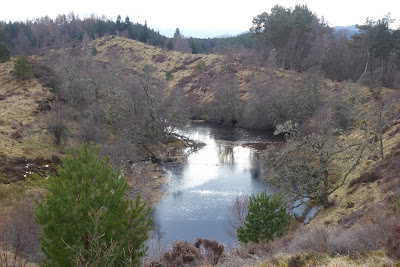Sadly, welcome to one of the 364 days of the year which aren't International Women's Day.
My teenage years were the 1970s, I grew up in a rural part of the North of England, and back then public places were often boozy, smoky and unremittingly sexist. It's easy, at this remove, to simply dismiss it all as so much 'Life On Mars', but that is too simplistic a view. I hope that I have been able, in some small way, to redress the balance of that culture during (so far) my adult life. I am not perfect by any means. No angel, and much angst, especially after a poorly-judged spot of innuendo - there's a long list of those, I'm afraid.
But I reckon there must've been glimmers of redemption to be seen in my younger self, at least from Our Lass's standpoint, or we wouldn't be where we are today. And we have been equally blessed with two wonderful daughters, though as a father, I certainly wish that the world had made more progress, and sooner, along the road to equality.
By the mid to late 1990s, I was working for a small firm that had a reasonable gender ratio, and by 'reasonable' I mean that women were present in some senior roles. Let's face it, any meeting held in a boardroom full of blokes will practically always descend into a pissing contest, which doesn't strike me as an efficient or healthy way to run a company, a national organisation or a government.
So, this small firm... featured characterful folk, both female and male. And the ladies introduced me to Alanis Morisette's 'Jagged Little Pill'. Jeez, that album should be compulsory in our schools. It brought things into focus in a way that I hadn't seen before, and certainly made me more of a feminist.
Obviously, I cannot fully understand these issues as a woman, there's no way I could properly appreciate the dead weight of centuries of misogyny, violence and abuse, but I think I definitely had my eyes opened to more of the picture. All to the good.
Before you rush to turn the sound off, don't worry, I'm not about to play 'that' sweary track. No, one of the more defining moments was 'All I Really Want' (though just about any track would qualify for that label).
All I Really Want
Do I stress you out?
My sweater is on backwards and inside out
And you say, how appropriate
I don't like to dissect everything today
I don't mean to pick you apart you see
But I can't help it
And there I go jumping before the gunshot has gone off
Slap me with a splintered ruler
And it would knock me to the floor if I wasn't there already
If only I could hunt the hunter
And all I really want is some patience
A way to calm the angry voice
And all I really want is deliverance
Do I wear you out?
You must wonder why I'm relentless and all strung out
I'm consumed by the chill of solitary
I'm like Estella
I like to reel it in and then spit it out
I'm frustrated by your apathy
And I am frightened by the corrupted ways of this land
If only I could meet the maker
And I am fascinated by the spiritual man
I am humbled by his humble nature, yeah
And what I wouldn't give to find a soul mate?
Someone else to catch this drift
And what I wouldn't give to meet a kindred?
Enough about me, let's talk about you for a minute
Enough about you, let's talk about life for a while
The conflicts, the craziness and the sound of pretenses is falling
All around, all around
Why are you so petrified of silence?
Here can you handle this?
Did you think about your bills, you ex, your deadlines
Or when you think you're going to die?
Or did you long for the next distraction?
And all I need now is intellectual intercourse
A soul to dig the hole much deeper
And I have no concept of time other than it is flying
If only I could kill the killer
And all I really want is some peace man
A place to find a common ground
And all I really want is a wavelength
And all I really want is some comfort
A way to get my hands untied
And all I really want is some justice
And so I will close with a memory of those times and a normal day at the office...
Don't have nightmares!




















































